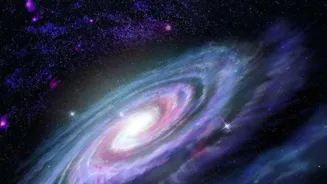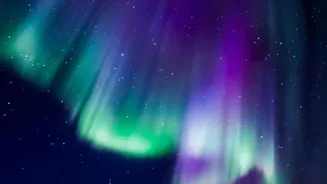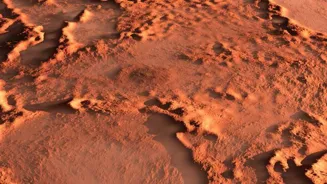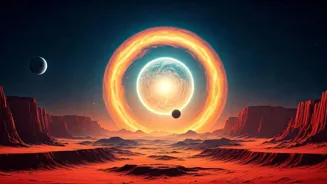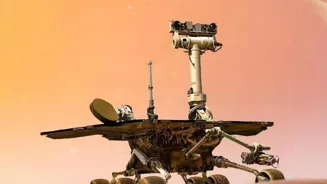Unveiling the Voyager's Yatra: A Cosmic Odyssey of Human Exploration. Dive into 10 stellar milestones in space history!
From the dusty plains of Earth to the inky depths of space, mankind's yearning to explore
has known no bounds. And among the many daring expeditions, NASA's Voyager mission stands out as a shining example.
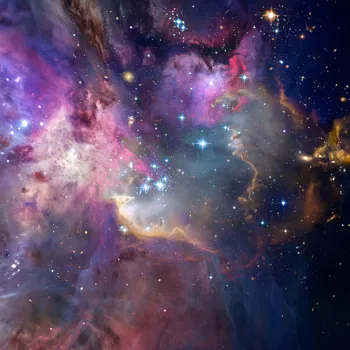
Launched in 1977, this twin spacecraft odyssey wasn't just about snapping pretty pictures; it marked a series of monumental achievements, forever changing our understanding of the cosmos and our place within it. Let's take a dekko at ten of the biggest milestones from this epic journey.
The Grand Tour: celestial choreography for interplanetary missions
First off, the Grand Tour was truly remarkable. Voyager 1 and 2 were cleverly timed to take advantage of a rare alignment of the outer planets. This allowed them to use the gravity of one planet to slingshot themselves towards the next, saving years of travel time and fuel.
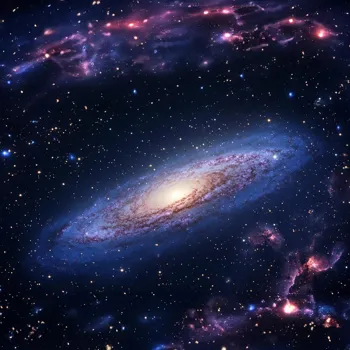
Imagine planning a road trip where each stop helps you speed towards the next! Without this celestial choreography, the Voyager mission as we know it wouldn’t have been possible. It was a masterclass in astrodynamics, proving that a little bit of celestial physics can go a long way.
The sheer planning and execution behind it was a feat in itself, setting a benchmark for future interplanetary missions. It showed the world how to cleverly navigate space.
Voyager transformed Jupiter from gas giant to dynamic world
Getting a close-up glimpse of Jupiter was a game changer! Before Voyager, Jupiter was just a blurry circle in our telescopes. Voyager sent back vibrant images of its swirling cloud bands, the Great Red Spot, and its many moons.
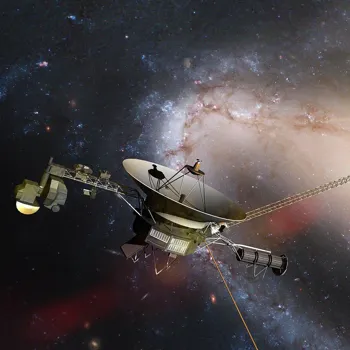
We discovered active volcanoes on Io, one of Jupiter's moons, a phenomenon never before seen outside of Earth. This discovery alone challenged our understanding of planetary geology. We also learned a lot more about Jupiter's magnetic field and its influence on the surrounding space.
Basically, Voyager turned Jupiter from a gas giant into a real, dynamic world for us!
Saturn's rings revealed complex structures in a cosmic ballet
Next up, Saturn's stunning rings were a sight to behold. Voyager showed us that the rings were not just simple bands of ice and rock, but complex structures with thousands of ringlets, gaps, and even spoke-like features. These rings were shaped by the gravitational pull of Saturn's moons.
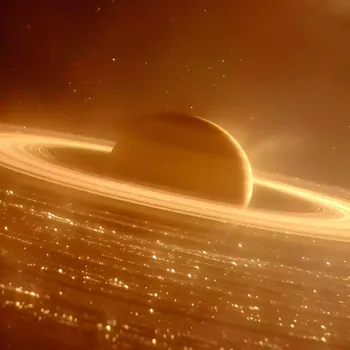
It was like looking at a cosmic ballet of particles. This close-up view revealed information about the composition and dynamics of Saturn's ring system. The Voyager mission truly expanded our horizons. Now we had a truly amazing view of the gas giant.
Voyager 2 explores Uranus, revealing rings, active atmosphere, and unique rotation
Uranus got its moment in the sun (well, sort of) as Voyager 2 became the first (and so far only) spacecraft to visit the ice giant. It revealed that Uranus has a faint ring system and a surprisingly active atmosphere. Also, that the planet rotates on its side.
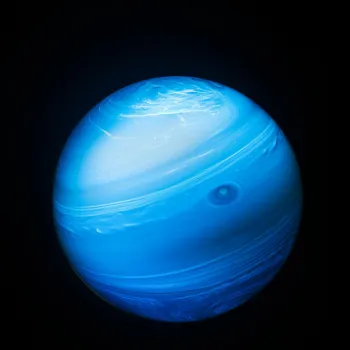
This gives it extremely unusual seasons. Voyager 2 also discovered several new moons orbiting Uranus. It helped us understand more about ice giants.
Voyager 2 explores dynamic Neptune and its moon Triton
Neptune, the last stop on Voyager 2's planetary tour, was another highlight. The mission revealed a dynamic atmosphere with a Great Dark Spot (similar to Jupiter's Great Red Spot), howling winds, and previously unknown moons.
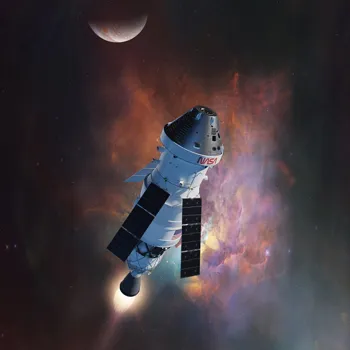
Triton, Neptune’s largest moon, turned out to be a fascinating world with icy volcanoes and a nitrogen-rich atmosphere. Voyager 2's visit showed us that even the most distant planets can be dynamic and fascinating. After passing Neptune Voyager 2 entered interstellar space.
Voyager's Golden Record: Message to extraterrestrial life
Then came the Golden Record! Each Voyager spacecraft carries a phonograph record containing sounds and images selected to portray the diversity of life and culture on Earth. It's like a cosmic time capsule, meant for any intelligent extraterrestrial civilization that might find it.
The record includes music from different cultures, greetings in various languages, and sounds of nature. Carl Sagan, a famous scientist, played a major role in designing the Golden Record.
Voyager missions provide vital data on space beyond planets
The Voyager mission has also sent a tonne of information about the space between the planets! As the Voyagers traveled further from the Sun, they sent back data about the solar wind, magnetic fields, and cosmic rays in the outer reaches of our solar system.
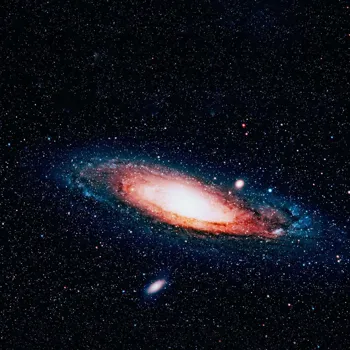
This information is crucial for understanding the heliosphere and how our Sun interacts with the rest of the galaxy. The Voyager missions have increased our understanding of plasma physics.
Voyagers reach interstellar space, sending back valuable data
And now, into Interstellar Space! Voyager 1 crossed the heliopause, the boundary where the Sun's influence ends and interstellar space begins, in 2012. Voyager 2 followed suit in 2018. These were game changing moments as now humans sent probes into interstellar space.
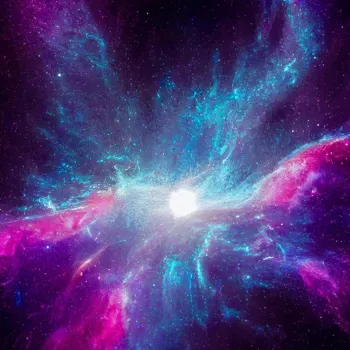
These spacecraft continue to send back valuable data about the conditions in interstellar space, providing a direct look at the environment beyond our solar system. It helped us learn about the galaxy.
The Long-Distance Comms
Voyager's ability to transmit data back to Earth from billions of miles away is a testament to the skill of the engineers. The signals from Voyager are incredibly weak. Receiving them requires huge radio antennas. It's like trying to hear a whisper from across the globe.
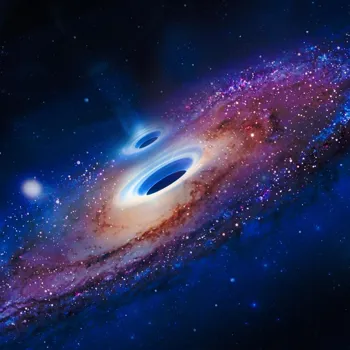
But the data that we receive are worth the effort. The very technology of Voyager shows ingenuity.
Voyager missions showcase enduring exploration legacy
In wrapping up the Voyager missions have set a new path of exploration. Despite their age, the Voyager spacecraft are still operational and continue to send back data. Their journey is a testament to human curiosity, engineering excellence, and the enduring power of exploration.
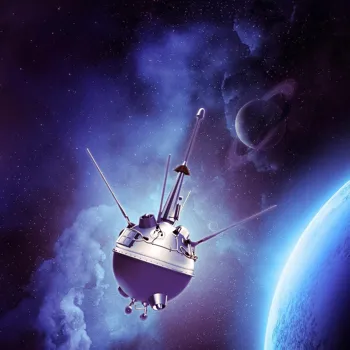
The Voyager missions have not only expanded our knowledge of the solar system and beyond but have also inspired generations of scientists and engineers. Their legacy will continue for years to come. These missions will be remembered as some of the greatest highlights.
AI Generated Content. Glance/InMobi shall have no liability for the content